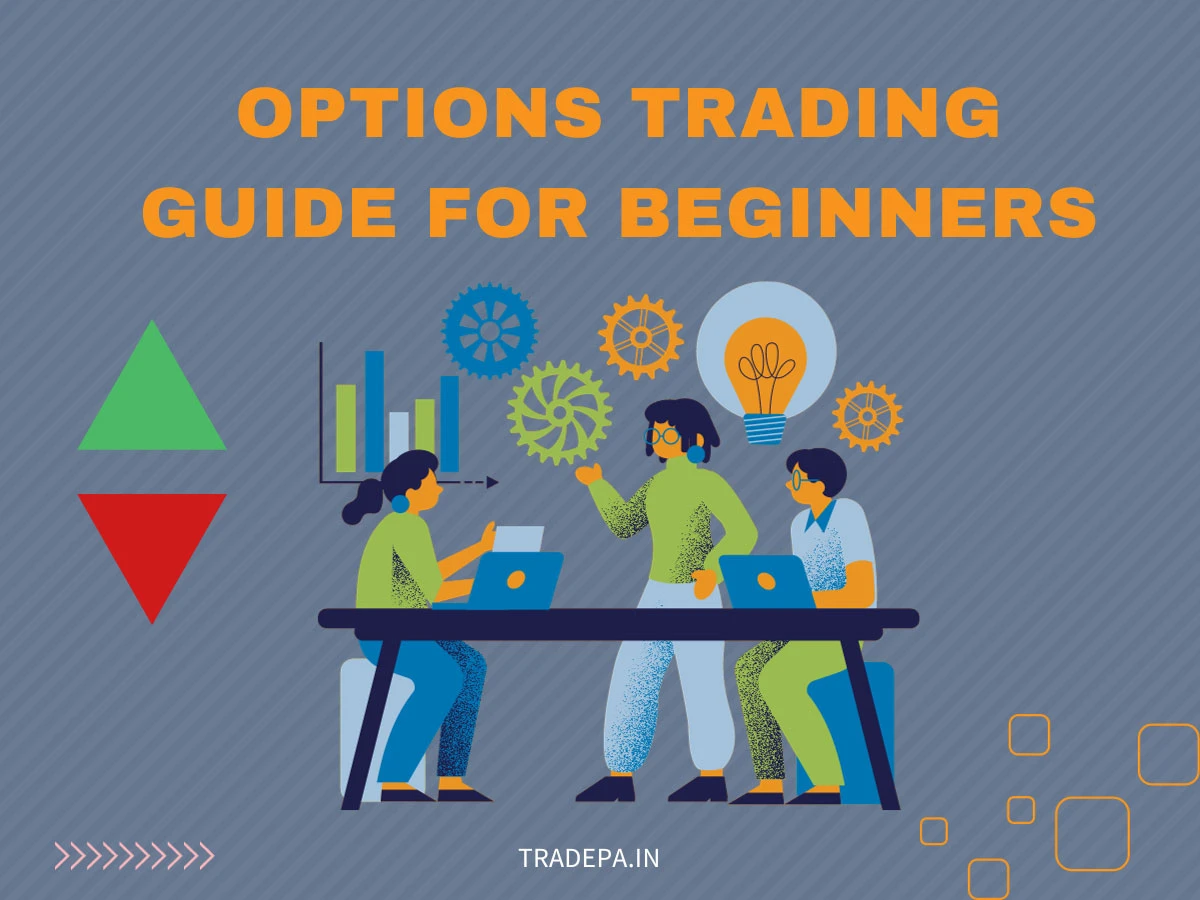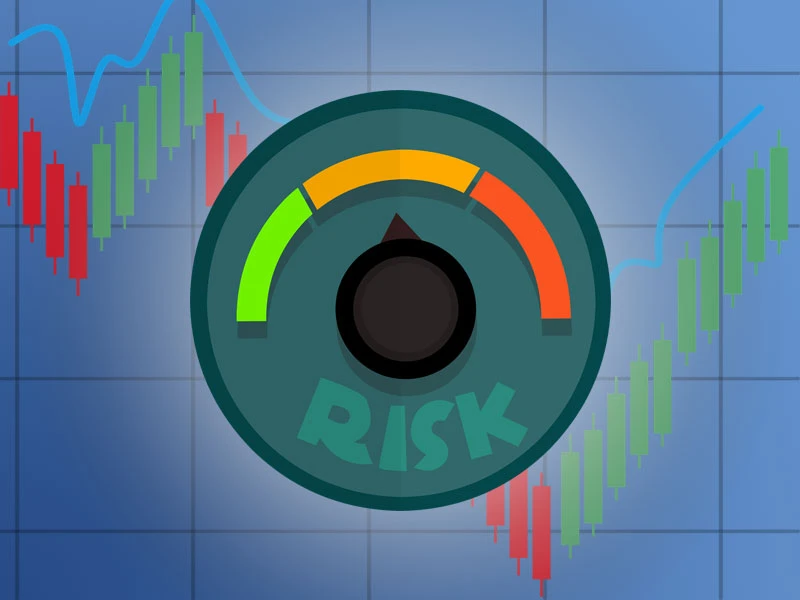Options Trading Guide for Beginners

In the financial markets, an option is a contract that conveys to the holder the right to buy (call) or sell (put) a security at a specific price on or before a given date.
The stock market is where companies' stocks and shares are traded. It's one of the most important ways for companies to raise money.
Options trading involves an arrangement between two parties, typically where one party buys and another sells, giving one party the right to buy or sell something at a specified time at an agreed price.
What are Options?
Options are derivative securities granting the holder the right to either purchase or sell an underlying asset at a predetermined price on or prior to a given date.
Options are one of the most widely embraced trading instruments in the world. They are used for hedging, speculation, and income generation.
Options can be used to protect oneself from price fluctuations in the market and generate income through shorting or purchasing them at a low price and then selling them at higher prices.
Difference Between Options Vs Stocks
| FEATURE | OPTIONS | STOCKS |
|---|---|---|
| Definition | Contracts providing the right to buy/sell an asset at a specific price by a certain date | Ownership shares in a company representing equity |
| Obligation | Buying options: offers the right but not the obligation to exercise the contract.
Selling options: can create obligations to sell (call option) or buy (put option) the underlying asset if exercised by the buyer |
Ownership entails rights and responsibilities |
| Risk and Return | Higher risk due to time decay and leverage potential | Generally considered less risky for long-term investors |
| Cost | Lower initial investment (premium paid for the option) | Higher initial investment (purchase price per share) |
| Timeframe | Finite time period (expires on a specific date) | Ongoing ownership until sold or company dissolves |
| Dividends | Generally do not provide dividend payments | Eligible for dividends declared by the company |
| Ownership | No ownership of the underlying asset | Ownership of a portion of the company |
| Voting Rights | No voting rights as options represent contracts | Grant voting rights in shareholder meetings |
| Market Volatility Impact | More sensitive to changes in volatility | Less impacted by short-term volatility swings |
| Purpose | Speculation, hedging, income generation | Ownership, investment, voting rights |
Components of an Options Contract
Strike Price
The strike price often termed the exercise price, is the predetermined value at which the underlying asset can be purchased or sold upon exercising the option. It's the price at which the buyer and seller of the option agree to transact the underlying asset. When dealing with call options, the strike price represents the specific price at which the buyer has the right to buy the asset, while for put options, it's the price at which the buyer can sell the asset.
Example:
Let's consider a call option on Company XYZ stock with a strike price of $50. If the current market price of XYZ stock is $55, the call option allows the holder to buy shares of XYZ at $50, even though the market price is higher. Conversely, if the market price drops below $50, the call option might lose value as buying shares at the current market price is more economical.
Premium
In options trading, the premium signifies the payment made by the option buyer to the seller. It represents the cost of buying the option. Various factors determine the underlying asset's volatility, time to expiration, and the difference between the strike price and the asset's current market price. The premium is paid upfront when the option is purchased.
Example: If a trader buys a call option on Company LMN at a premium of $5 per share, with a total contract size of 100 shares. This means the investor pays the seller $500 (=$5 * 100 shares) for the option contract. If the option expires without exercise or the market price doesn't surpass the strike price, the investor loses the premium paid. However, the call option could be profitable if the market price rises significantly.
Expiration Date
The expiration date marks the point at which the options contract becomes null and void. It's the deadline by which the option holder must decide whether to exercise their right or let the option expire worthless. Options contracts are time-bound, and their value diminishes as they approach expiration. After the expiration date, the option loses all value and ceases to exist.
Example: Suppose there's a put option for Company ABC with an expiration date of December 31. If the market price of ABC falls below the strike price on or before December 31, the put option buyer can sell the company's shares at the higher strike price, potentially profiting from the difference. However, if the market price remains above the strike price or the option isn't exercised before December 31, the option expires worthless.
Why Trade with Options?
Options trading is a way of investing in stocks and shares that differs from the traditional method. It allows you to buy or sell an option - which is a contract that gives you the right to buy or sell a particular stock or share at a fixed price on or before a given date.
There are three main reasons why trading options might be better than simply buying and selling stocks.
- The first reason is that they are more flexible regarding the amount of risk you can take.
- Secondly, they allow you to make money if the price goes up, down, or stays the same.
- Lastly, when trading with options, you have less capital at risk than when trading stocks and shares directly.
How to Trade Options - The Basics
Options trading is a way of hedging your investments and reducing the risk of a stock market crash.
There are two types of options. The first type, call options, give you the right to buy a stock at a set price before the expiration date. The second type, put options, gives you the right to sell stocks at a set price before expiration.
Options can be traded in different ways:
- Buying an option contract gives you the right to trade it anytime.
- Selling an option contract gives you the obligation to trade it if someone else wants it from you.
- A short sale is when you sell something you don't own and expected that the price will fall down so that you can buy it later for less than what you sold it for (and make money). This is only possible with stocks that can be borrowed from someone else for short periods.
What is an Option Contract?
An option contract is the right to buy an asset (stocks) at a specified price on or before a certain date.
There are two types of options: call and put options: -
Call option:
A call option is a financial contract that grants the owner (the holder) the rights, but not the obligation to buy an agreed number of shares of a particular asset from the seller of that option (the underlying) at a certain time and price.
Put option:
A put option is a contract between the seller and the buyer, where the buyer has the right to sell an asset (such as a stock) to the seller at a given price.
A put option can be exercised at any time before it expires. The seller of a put option contract is obligated to buy an underlying asset from the holder of that option if they wants to exercise their right. A put option provides its owner with two ways of making money:
- By exercising their put option, they sell the underlying asset to its holder.
- By selling the put option back to the market and collecting its premium (the amount paid for the put). The owner of a call option does not have any way of making money by exercising their call option.
Advantages of trading options
Trading options offer several advantages that attract investors seeking portfolio diversification and capitalize on market movements uniquely.
- Leverage and Potential Returns: One of the primary advantages of options trading is the capability to control a larger position of an underlying asset with a smaller amount of capital. Options contracts are leveraged financial instruments, meaning a trader can potentially achieve higher returns than investing directly in the underlying asset. With a relatively small investment (the premium), traders can gain exposure to a larger asset value, amplifying potential profits.
- Hedging Strategies: Options provide versatile tools for hedging against potential losses in an investment portfolio. Through various strategies, such as buying protective puts or employing covered call strategies, traders can mitigate downside risks associated with fluctuations in the market. Hedging with options allows investors to protect their portfolios against adverse price movements while participating in potential upside gains.
- Diversification and Flexibility: Options trading offers a wide range of strategies that cater to different market conditions. Whether the market is bearish, bullish, or stagnant, options provide the flexibility to profit from various scenarios. Traders can implement strategies like spreads, straddles, or strangles, enabling them to diversify their investments and potentially profit from market volatility or stability.
- Limited Risk: Unlike trading stocks, where losses can be unlimited if the market moves drastically against the position, options trading offers limited risk. The maximum loss in an options trade is typically limited to the premium paid for purchasing the option contract. This risk management feature makes options appealing for risk-averse traders or those seeking to define and limit potential losses.
- Opportunities in Volatile Markets: Options can thrive in volatile market conditions. Volatility can significantly impact options prices, and for traders adept at analyzing and predicting market movements, this volatility can present profit opportunities. Strategies like straddles or strangles capitalize on market volatility by benefiting from large price movements regardless of the direction.
When used correctly, options trading is a powerful financial tool that can offer significant advantages for investors seeking to manage risk, enhance returns, and diversify their portfolios. However, it's essential for traders to thoroughly understand the complexities of options and employ appropriate strategies tailored to match their risk tolerance and investment objectives.
Risks Involved in Options Trading

While offering potential rewards, options trading also has inherent risks that traders must consider and manage carefully.
- Limited Timeframe: Options contracts have expiration dates, creating a time constraint for investors. If the market fails to move in the expected direction within the designated timeframe, the option can lose value rapidly as it approaches expiration. This time decay, known as theta decay, can erode the option's premium value, potentially resulting in significant losses.
- Volatility and Risk Management: Options prices are influenced by market volatility. While volatility can offer profit opportunities, it also increases uncertainty and risk. Rapid and unpredictable price swings can lead to unexpected losses. Additionally, managing risk in options trading is crucial. Without proper risk management strategies, like implementing stop-loss orders or employing position-sizing techniques, traders might encounter significant losses if the stock moves against their positions.
- Complexity of Strategies: Options trading involves a variety of sophisticated strategies that can be complex and challenging for beginners. Without a deep understanding of these strategies, traders may misinterpret their risk exposure or execute trades incorrectly, leading to unexpected losses. It's crucial for traders to thoroughly educate themselves on options strategies before engaging in trading activities.
- Leverage and Magnified Losses: While leverage can amplify potential profits in options trading, it also magnifies potential losses. Since options allow traders to control a larger position with a smaller amount of capital, a small adverse movement in the underlying asset's price can result in substantial losses. Traders must be cautious about the leverage effect and manage their positions accordingly to avoid excessive risks.
- Unforeseen Market Events: Unexpected market events, such as geopolitical tensions, economic downturns, or sudden shifts in company fundamentals, can cause rapid and significant fluctuations in the market. These unforeseen events can render options positions vulnerable to unexpected losses, as they can quickly alter the anticipated direction of the market, leaving traders exposed to potential risks.
Options trading requires a comprehensive understanding of the associated risks and diligent risk management strategies to mitigate potential losses. Traders should conduct thorough research, implement risk management techniques, and be prepared for unexpected market movements to navigate the complexities and uncertainties of options trading.
Conclusion
In conclusion, venturing into options trading as a beginner opens many opportunities and complexities. Mastering the foundational aspects of options is crucial, including their components, strategies, and associated risks. While options offer leverage, diverse strategies, and potential for significant returns, they also demand careful risk management and a deep comprehension of market dynamics.
Remember, options trading isn't without risks. The time-sensitive nature of options and market volatility necessitates diligence and discipline. Establish a robust trading plan, set clear entry and exit points, and employ risk mitigation strategies to safeguard your investments. Continual learning, adaptability, and a calculated approach will be valuable allies on your options trading journey.








